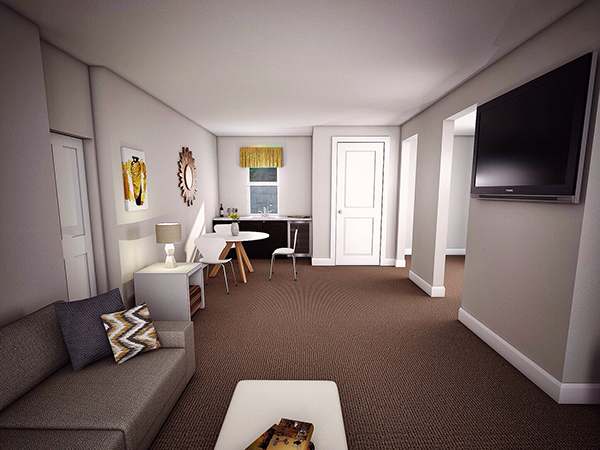When it comes to interior design, the options for rendering your ideas are endless. But which software should you use to get the best results? There are many different software programs that can be used for interior design rendering, but two of the most popular are SketchUp and Photoshop. So, which one should you use? In this blog post, we’ll compare SketchUp and Photoshop side-by-side to help you decide which one is right for your next project. We’ll cover topics like ease of use, customization options, output quality, and more.
Sketchup
Sketchup is a 3D modeling program that allows users to create detailed models of structures and environments. It can be used for a variety of purposes, including interior design, architecture, and landscape design.
One of the great things about Sketchup is that it’s relatively easy to learn compared to other 3D modeling programs. And once you’ve got the hang of it, you can use it to create some truly stunning images.

If you’re looking to get into interior rendering, Sketchup is a great place to start. In this post, we’ll show you how to create a photorealistic interior render using Sketchup and Photoshop.
Photoshop
Have you ever considered using SketchUp and Photoshop for your interior renderings? This powerful combination can give you some amazing results!
SketchUp is a great tool for quickly creating 3D models of your space. And with the addition of some textures and lighting, you can create a pretty realistic looking image. Photoshop then comes in to add the finishing touches – like furniture, window treatments, and accessories.
The best part about this method is that it’s relatively easy to learn. So if you’re new to 3D modeling or rendering, this could be a great place to start. Plus, there are tons of online resources and tutorials available if you need some help along the way.

Interior Rendering
When it comes to interior rendering, SketchUp and Photoshop are two of the most popular programs on the market. However, there are a few things to keep in mind when using these programs to render an interior space.
For one, it’s important to make sure that the SketchUp model is as accurate as possible. This means taking into account all of the elements that will be present in the final image, such as furniture, windows, and doors. If any of these elements are not included in the model, they will not appear in the final render.
Additionally, it’s important to pay attention to lighting when rendering an interior space. Natural light can help create a warm and inviting atmosphere, while artificial light can help create a more dramatic effect. By playing around with different lighting setups, you can create a variety of looks for your interior renders.
Finally, don’t forget about textures! Textures can add a lot of realism to an image, so be sure to experiment with different types of textures until you find ones that work well with your particular scene. With some practice and experimentation, you’ll be able to create stunning interior renders using SketchUp and Photoshop!

Sketchup vs Photoshop
When it comes to creating interior renderings, Sketchup and Photoshop are both popular choices among designers. But which one is the best tool for the job?
Sketchup is a 3D modeling program that allows users to create detailed models of rooms and furniture. Photoshop is a 2D image editing program that can be used to create photo-realistic images.
So, which one should you use for your next interior rendering project? Here’s a look at the pros and cons of each:
- Sketchup:
Pros:
- Allows you to create detailed 3D models
- Easy to use interface
- Lots of helpful tutorials available online
Cons:
- Can be challenging to create realistic images with Sketchup alone
- Rendering times can be long
2. Photoshop:
Pros:
- Can create realistic images quickly and easily
- Lots of helpful tutorials available online
Cons:
- 2D images can lack depth and detail

Tips and Tricks
- When it comes to interior rendering, one of the most important things you can do is make sure that your SketchUp model is as accurate as possible. This means taking the time to add in all of the details, such as flooring, furniture, and accessories.
- Once you have a detailed SketchUp model, it’s time to bring it into Photoshop. Here you can add in even more details, such as lighting and shadows, to create a realistic render.
- To really make your renders pop, try using some unique textures and materials. There are tons of free resources online that you can use, or you can create your own.
- Finally, don’t forget to save your work regularly! Rendering can be a time-consuming process, so it’s important to save often so you don’t lose any progress.
Conclusion
Sketchup photoshop interior rendering is a great way to create realistic images of your home or office space. By using Sketchup, you can easily add furniture and other objects into your image, and then use Photoshop to render the final image. This process can be time-consuming, but the results are definitely worth it. If you’re looking for a way to create beautiful images of your space, Sketchup photoshop interior rendering is a great option.





